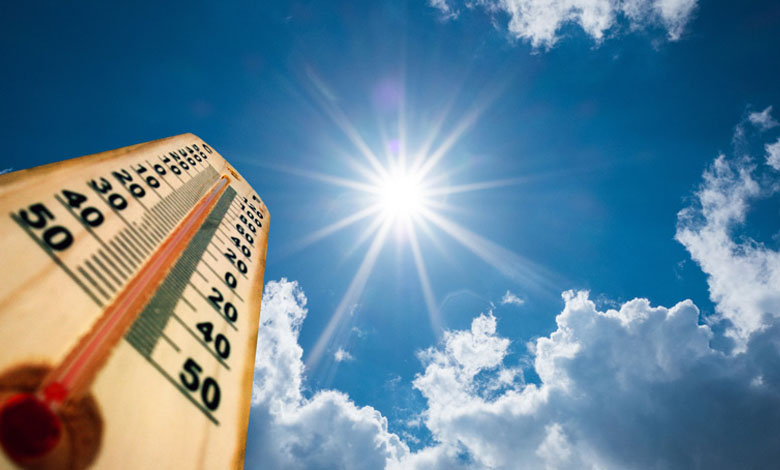The world is whistling into the abyss

What scientists feared for several years is happening. Human activity has already disrupted the global climate enough to trigger “tipping points” that risk causing irreversible and catastrophic impacts, concludes a new study published in the highly respected journal Science.
As a result of our dependence on fossil fuels, the Earth’s average temperature has already risen by an average of 1.2°C since the pre-industrial era. However, this warming is sufficient to quickly lead us to five so-called “tipping” points, i.e. critical thresholds beyond which phenomena become irreversible.
The study of Science, which is based on more than 200 scientific publications, thus notes that the brutal and inevitable thaw of the permafrost of northern regions is about to begin, assuming that it is not already underway. However, this permafrost contains a veritable “climate bomb”, in the opinion of scientists. Taking into account the methane and CO2 it contains, it would contain the equivalent of 1700 billion tonnes of greenhouse gases (GHGs), ie twice the quantity of GHGs already present in the Earth’s atmosphere.
Scientists who profile tipping points also point to the collapse of the Greenland Ice Sheet. In a study published in August in Nature Climate Changeglaciologists had also found that the current warming was already sufficient to melt enough ice to cause a rise of 27.4 centimeters in the level of the oceans of the planet.
Disappearance of corals
The study published on Thursday adds that the melting of part of the Antarctic ice sheet has also begun, but also that the warming of the waters of the oceans is already disturbing the currents of the Atlantic, including the Gulf Stream, which influence in particular the climate of Europe.
As for the warm water coral reefs, their announced disappearance has already begun. According to the scenarios of the Intergovernmental Panel on Climate Change (IPCC), at least 90% of these reefs will be wiped off the map with a warming of 1.5°C, a threshold that could be reached as early as 2030.
But that’s not all, since the 1.5°C threshold risks activating no less than four other tipping points, warn the authors of the study published in Science. Among these, there is a permanent melting of mountain glaciers, a major disruption of ocean currents in the Atlantic, but also disturbances of rain cycles in West Africa, India and Amazonia. In the long term, the largest tropical forest on the planet may even turn into savannah.
However, the planet’s climate is not on track to stabilize at an increase of 1.5°C, the most ambitious objective of the Paris Agreement. Assuming that all states meet their current climate commitments, which are made on a voluntary basis, warming is expected to reach 2.7°C.
In addition to rising sea levels that would hit hundreds of millions of people around the planet, such a scenario would cause the Amazon rainforest to die, the permafrost to “collapse” and an accelerated melting of Antarctica. , warns the study of Science.
“For me, it will change the face of the world, literally, if you look from space”, with the rise in the level of the oceans or the destruction of the forests, explained to Agence France-Presse Tim Lenton, one of the main authors of the study. Deadly droughts and floods that have hit different parts of the world this year would also become the norm.
Radical shift
“Cascading” impacts are already increasingly difficult to manage, says the IPCC, pointing out that millions of people living in Africa, Asia, Central America, South America and island countries are now directly exposed to food insecurity and a lack of access to drinking water. Globally, “3.6 billion people live in contexts that are highly vulnerable to climate change”.
In this context of continued warming of the global climate, “any delay in reducing greenhouse gas emissions and in adapting to the impacts of warming will cause us to miss the brief window of opportunity allowing us to ensure a viable future. for all of us and which is rapidly closing,” according to the IPCC.
To avoid the worst, the organization warned earlier this year that global GHG emissions must peak by 2025, before falling by at least 43% by 2030, compared to 2019 levels. However, current commitments lead us to a growth of at least 14% in emissions by the end of the decade.
The most recent IPCC report, which constitutes the scientific basis for global climate negotiations in view of the next UN conference (COP27), highlighted in particular the need to implement “major transformations” in the energy sector, including a drastic reduction in the use of fossil fuels.
The IPCC also noted the need for “changes in our way of life”. This requires a reduction in the need for motorized transport (including air travel), but also by the development of cities, which must imperatively make it possible to “reduce the consumption of energy” and resources.












